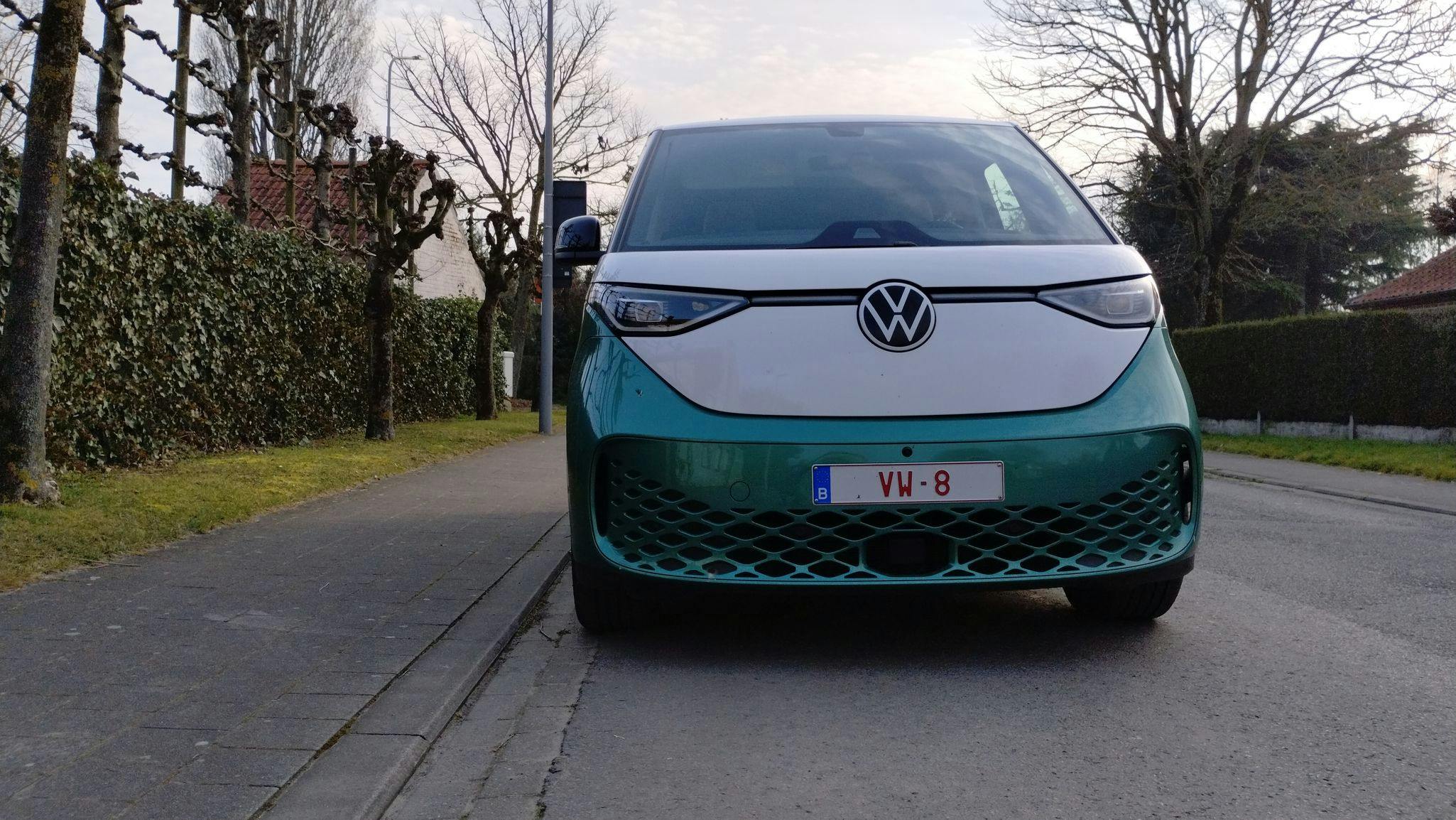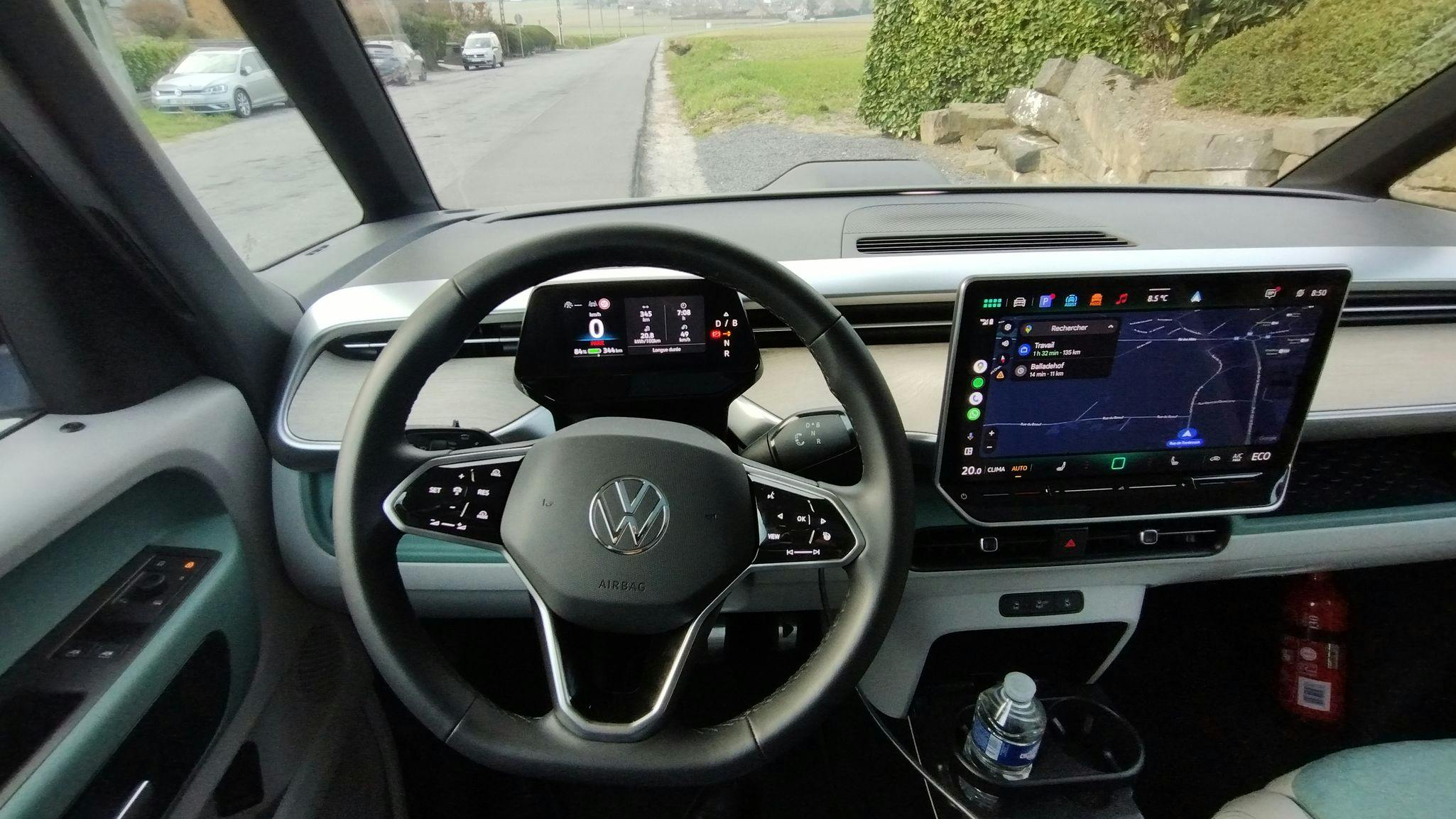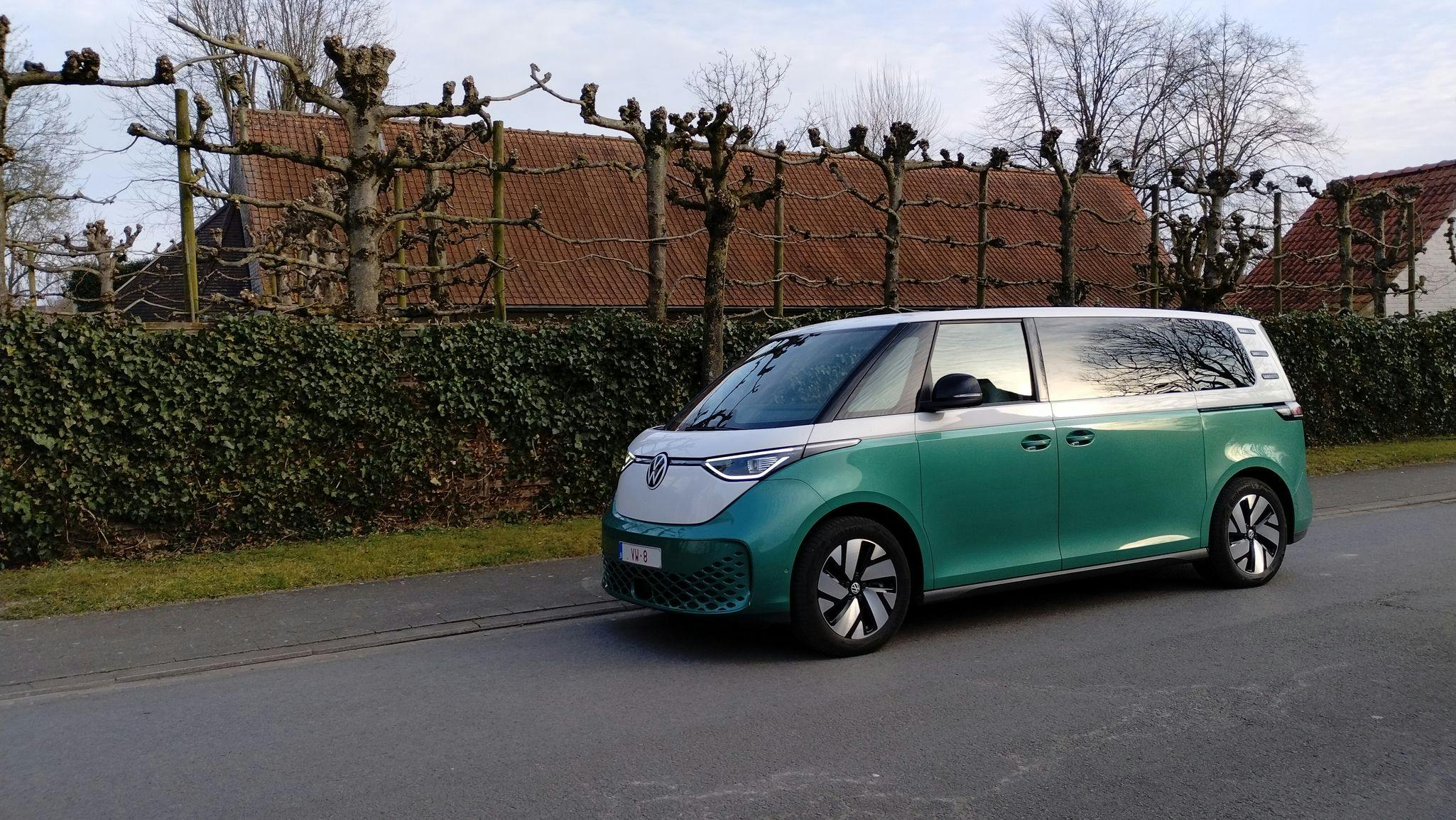It’s undeniable that the Volkswagen ID.Buzz truly catches the eye. Particularly due to its dual-toned exterior which harks back to its iconic predecessor from the 1950s and '60s. However, this modern version is set in the 21st century and operates on an electric drive system.
Before the introduction of the LWB version, the ID.Buzz was offered exclusively with five seats for family use (within Europe). However, this wasn’t sufficient. The launch of the ID.Buzz LWB addresses these limitations. "LWB" stands for "long wheelbase," which adds an extra 25 centimeters compared to previous models. Consequently, it now features seven actual seating positions along with additional cargo space and extended driving range. Specifically, the new model comes equipped with a battery capacity of 86 kilowatt-hours usable (or 91 kilowatt-hours gross), representing a gain of 7 kilowatt-hours over the regular ID.Buzz featuring identical motors. While this increase might seem modest, every bit counts when it comes to enhancing performance. Let’s delve into further details. Now we have the chance to experience firsthand how this vehicle handles as we set off on our journey aboard this four-meter-nine-six-long box towards the picturesque landscapes around Kortrijk in Western Flanders (Belgium) via the highway.

Combi bus
Initiating this adventure involves pressing your foot on the brake and manually shifting the gear selector located behind the steering wheel. As soon as you do so, you set off amid appreciative glances from people around, impressed by the neo-retro design of our compact hauler. It’s tempting to respond with a surfer-style gesture just to flaunt it further. Given that tonight marks part of an expedition, we'll spend the evening lounging on air beds following a lively celebration where we’ll supply the music. Besides myself and my trio of guests who squeezed into what was initially trunk space—with the backmost seatbacks lowered—the vehicle accommodates numerous items: duffels, suitcases, more airbeds, sleep sacks, audio equipment including amplifiers and speakers, along with boxes containing cords and microphones—and let's not forget the disco ball! All these belongings comfortably stowed beneath the hatchback (which may come electric). Plus, they sit atop compartments designed for essential tools such as first-aid kits and safety triangles—without needing to remove the cargo shade. However, setting up microphone stands required positioning them at the rear under the seating area. Importantly, designing ease-of-access meant equipping each side panel with slide doors (also available in optional automatic versions) enabling entry directly into the farthest passenger section; folding down those same rows simplifies reaching all areas effortlessly. Thus, everything falls neatly into place quite smoothly.

Holiday Atmosphere
Seated on the right side behind the wheel, you're confronted with an expansive dashboard that seems boundless. This expanse offers little usability. Fortunately, there’s a glove box positioned before the passenger seat just above another storage space known as the glove compartment. Similar compartments can be found scattered around the interior cabin. Additionally, close to the steering column lies a slot designed specifically for smartphones, accompanied by two USB-C ports. However, these components become redundant should your device support wireless charging since the console includes an induction charger instead. The vehicle further equips each seating row—driver, front passenger, and rear passengers—with their own set of USB-Cs.
Connectivity within this setting feels comprehensive amidst a welcoming atmosphere, notwithstanding the use of plastics. To adjust lighting levels, one may alter the transparency of the panoramic sunroof via a touch-sensitive zone located atop the ceiling; simply slide your finger across it to control light exposure—a feature both engaging and enjoyable!
Moreover, although additional insulation provided through specialized glazing must be purchased separately, it significantly contributes to isolating external noise so effectively that even loud disturbances like someone shouting barely penetrate inside. Interestingly enough, though, the car remains impressively quiet at all times due to its inherently subdued powertrain operation.
Tchiki boum
Could you picture the stereotypical scene of hipster enthusiasts swaying to the rhythm of the music as they meander through their vibrant, green-and-white bus? This describes our experience during this trial (despite none of us being true hipsters). The ID.Buzz fosters an atmosphere ideal for relaxed discovery. On highways too, every stretch of asphalt feels transformed. Thanks to the powerful 286 horsepower (210 kilowatts) engine mounted at the back of the minivan, we effortlessly lead the flow of traffic, comfortably occupying the far-left lane. With a substantial torque output of 560 Newton-meters, accelerating becomes almost effortless; indeed, it achieves zero-to-100-kilometers-per-hour in just 7.9 seconds when pushed properly. Nonetheless, the sheer size of the vehicle prompts cautious navigation through curves and roundabouts, despite having a lower center of gravity attributed partly to the hefty battery pack. Despite resembling a rectangular block, Volkswagen has optimized the aerodynamic design enough to make extended road trips feasible, further enhanced by a newly developed, fuel-efficient powerplant within the VW ID series lineup.

Traveller
In rural areas, one might achieve energy consumption under 19 kWh per 100 km. However, maintaining this efficiency becomes challenging above speeds of 100 km/h; typically, it averages about 23 kWh per 100 km. Fortunately, we experienced pleasant springlike temperatures during our journey, allowing us to aim for approximately 300 kilometers on highways and possibly surpassing 400 kilometers overall travel distance. Regardless of the time of year, planning rest stops every two hours on the highway remains feasible, extending up to 2.5 hours with favorable conditions prior to seeking out a charging point. When arriving at these stations, aligning the vehicle’s rear-right side close to the electrical outlet is essential. While the peak charging rate could reach 200 kW, both the charger station hardware and onboard software ultimately determine the effective output—such as limiting it to 125 kW. Consequently, expect needing roughly half an hour for refueling to gain another 200 km worth of charge unless facing extremely harsh winter climates. Notably, for colder periods, options like heated backseats and windshield de-icing systems may be available within the vehicle.

Limited weight
Whether you're heading out camping or dropping off items at the recycling center, towing a trailer becomes an option due to its electric tow hook capable of handling up to 1000 kg. However, be cautious; adding passengers will bump your overall load past 3.5 tonnes. If this happens, ensure you obtain the proper driving license. There's also a subtle limitation amidst the excitement: the vehicle has a maximum authorized gross weight of only 3340 kg. Therefore, fitting seven rugby players along with their equipment inside won’t work well since it would exceed capacity. When converting the ID.Buzz into a cargo van by folding all the rear seating arrangements, the available space maxes out at around 2469 liters—still suitable mainly for smaller transport tasks rather than large-scale moves. Its design emphasizes both comfort and ambiance suited for family outings as much as daily commutes. Additionally, the detachable central display enhances connectivity through Bluetooth. Lastly, although sizable, maneuvering within urban settings remains manageable owing to efficient camera-assisted parallel-parking aids—the minimum required spot being approximately 5.5 meters long.

The Painful Price
The extended-wheelbase ID.Buzz is fantastic. Its design as an MPV is appealing both visually and when driven. With its sizable 86kWh battery, it promises exciting adventures and travels with minimal compromises. However, during colder months, you might have to adjust your expectations somewhat. The entry-level version of this 286 horsepower vehicle starts at around €62,000 inclusive of value-added tax (€56,000 being the base price for the shorter-wheelbase five-seat variant equipped with a 79kWh battery).
Our test unit came loaded with numerous extras like the infotainment package priced at €1,657, the comfort kit worth €3,091, additional features such as the tow bar, sliding doors, and power liftgate costing €3,130, along with distinctive dual-toned paint job and comprehensive driver assistance systems adding another €2,585; not forgetting the luxurious interior upgrade which adds up to €4,114—bringing our total expenditure to approximately €85,722 plus change! Quite something!
In contrast, over in France, one could anticipate shelling out roughly €58,400 for the seven-passenger Pro edition of the standard-length ID.Buzz. Meanwhile, across the border in Switzerland, buyers looking for the same high-specification Pro model will find themselves paying about 71,000 Swiss Francs just for the basic configuration. Lastly, prospective Canadian customers should prepare their wallets for a significant hit since they’ll likely be asked to fork over nearly $81,000 CAD for theirs.
There we have it then...
(MH with Olivier Duquesne – Source: Volkswagen – Images: © Olivier Duquesne & Volkswagen)



0 Comments